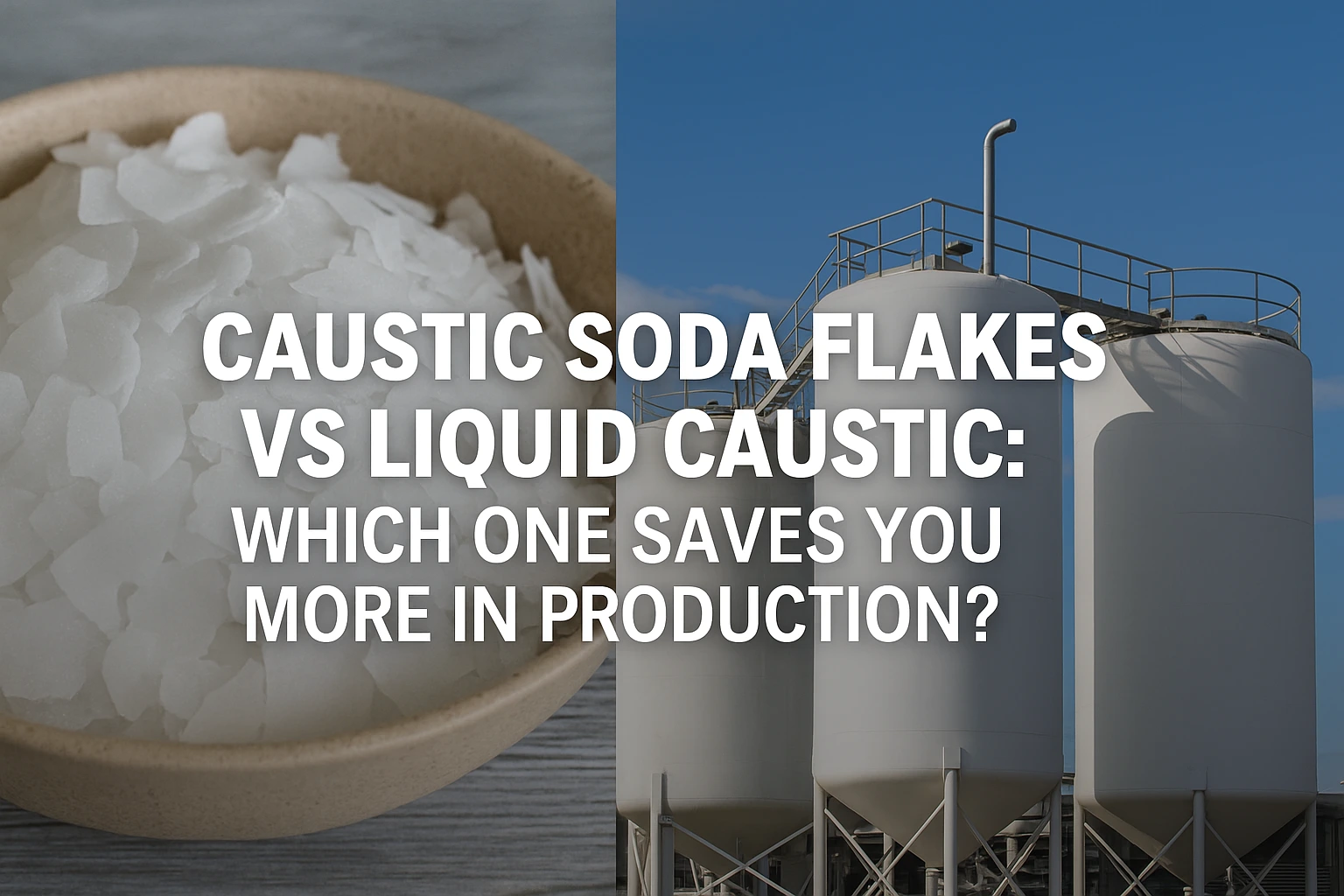1. Introduction: The Sodium Hydroxide Dilemma
As sodium hydroxide (NaOH) remains a cornerstone in global manufacturing, the choice between caustic soda flakes and liquid caustic becomes a critical operational and financial decision. With over $46.4 billion in global market value projected for 2025, most chemical, water treatment, pulp, and manufacturing plants must weigh raw material cost, process efficiency, and total supply chain management.
2. Cost Structures: Flakes vs Liquid—What Really Saves More?
Though both forms serve the same function, their costs differ due to concentration, handling, and logistics. Caustic soda flakes are 98%–99% pure NaOH and ship as dense, solid products needing only dry storage. Liquid caustic, typically 20%–50% NaOH, often incurs higher costs from special containment, bulk transport, and risk of spills or evaporation loss. Multiple industry studies and supplier benchmarks show flakes are usually more affordable for long-distance or bulk shipments—and offer lower per-unit freight cost since you aren't shipping water. However, when immediate application and process speed are needed, liquid may be cost-efficient by reducing dissolution labor and tank mixing steps.
3. Handling, Storage, and Safety: Practical Impacts on Production
Flakes store more safely—no special tanks, less leakage risk, and easier handling for stockpiling or variable demand. Liquid caustic requires robust, corrosion-proof containers and poses greater risk of accidental release, increasing safety costs and requiring trained handling staff. However, liquid is ready for use—no need for extra dissolution (which, for flakes, also comes with exothermic hazards and mixing costs).
4. Quality, Purity, and Performance in Industrial Use
Flakes hold an edge in purity (≥98%), especially vital in demanding applications—food, pharma, and high-spec processes. Liquid caustic provides easier quality and concentration control for continuous dosing and rapid production needs; its standardized 20%–50% strength helps limit dosing errors and allows seamless integration for automated lines. Both are highly effective, but selection impacts process flexibility and quality assurance.
5. Choosing the Optimal Form: Application-Driven Decision
For industries needing repeated, rapid dosing (water treatment, continuous manufacturing), liquid caustic cuts labor, accelerates processes, and reduces risk of incorrect mixing. For those with flexible production, limited infrastructure, or a need for long-term storage, flakes offer longer shelf-life and easier logistics. Many manufacturers use both forms: flakes for emergencies or batch needs, liquid for high-volume, streamlined plants.
6. Conclusion: The Best Value for Your Process
Flakes generally bring cost savings on storage, shipping, and shelf-life—liquid caustic delivers time efficiency and process consistency. The best choice depends on required purity, application speed, and the total cost profile of your unique operation. By understanding the true differences, buyers can make the best data-driven sodium hydroxide decision for 2025 and beyond.

Leave a Comment